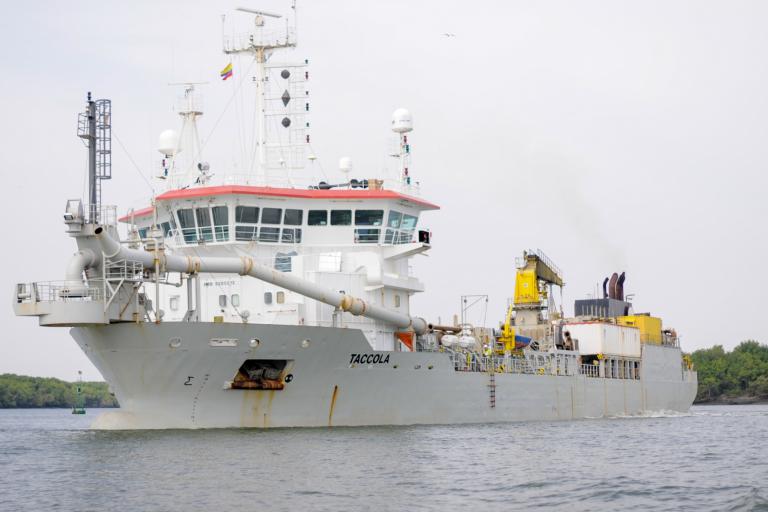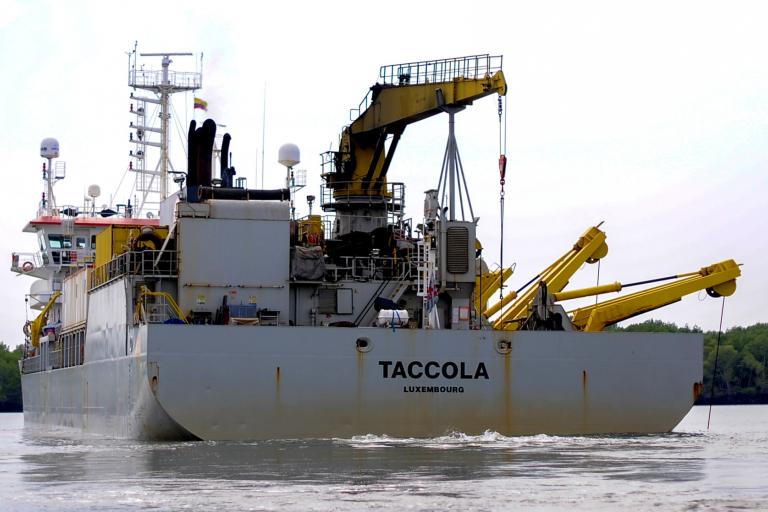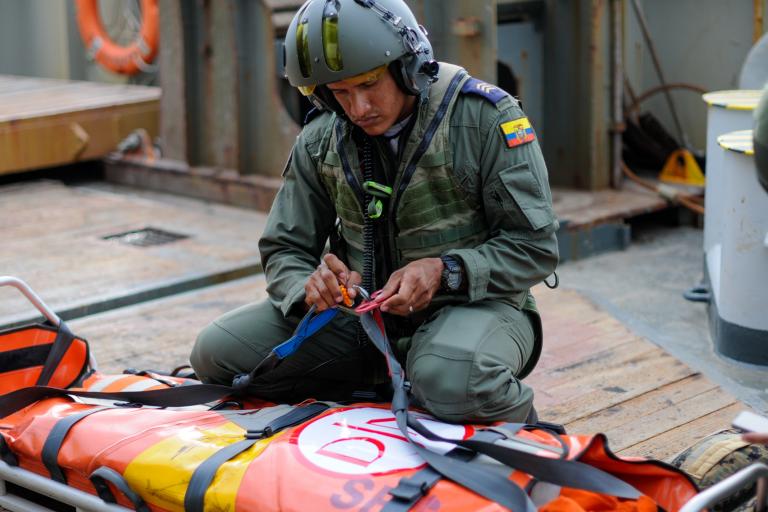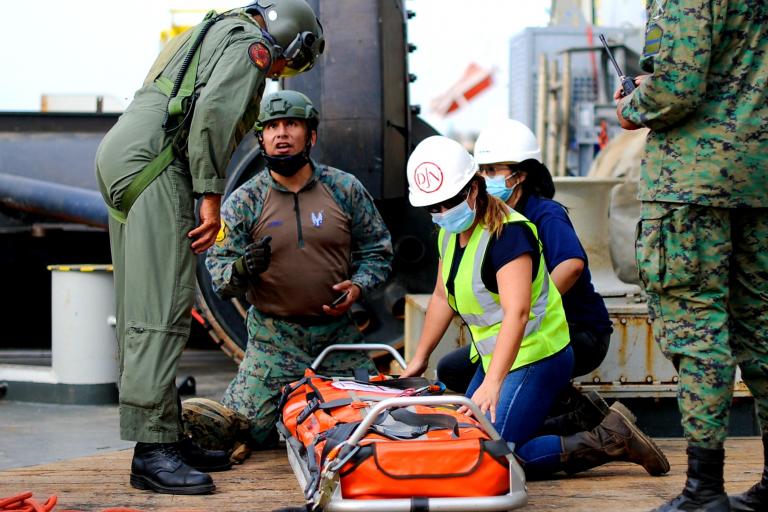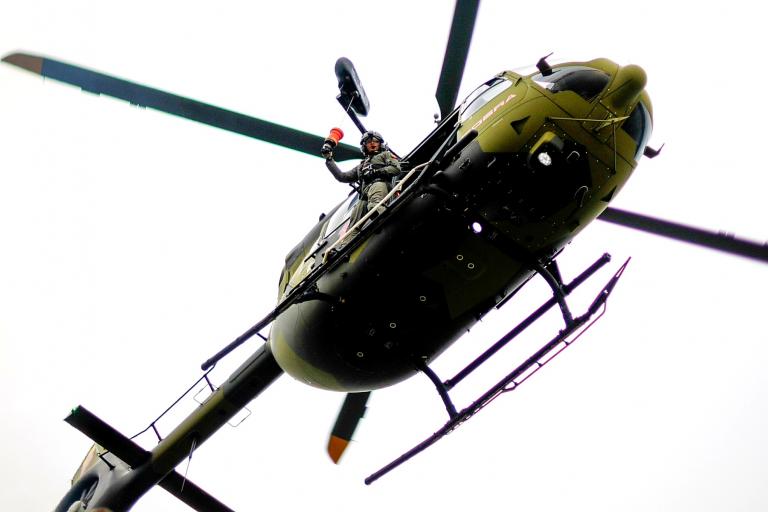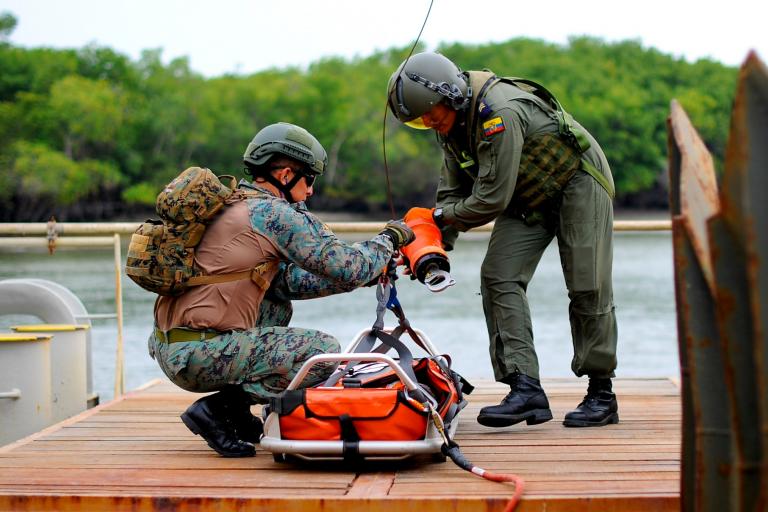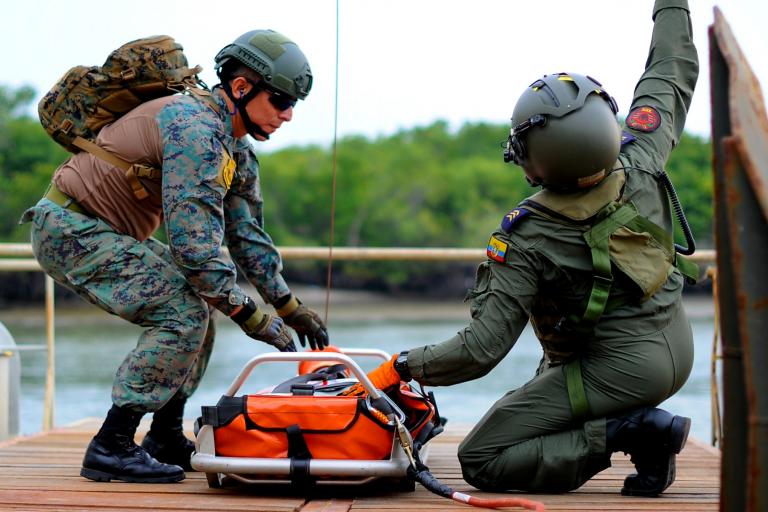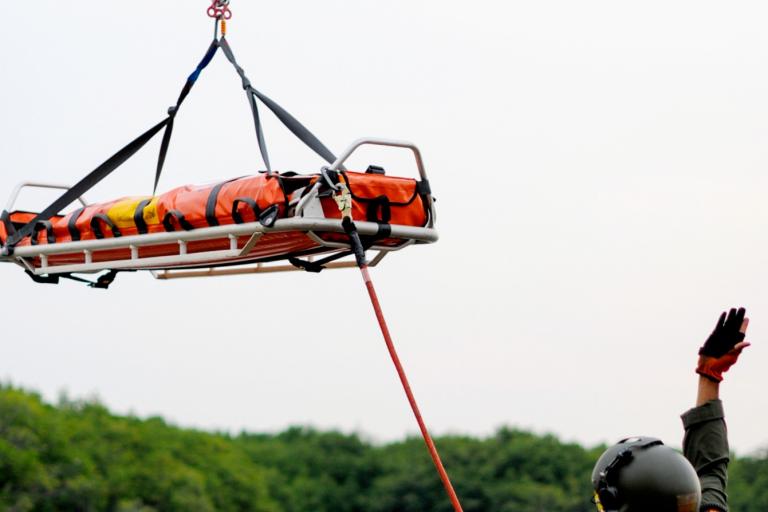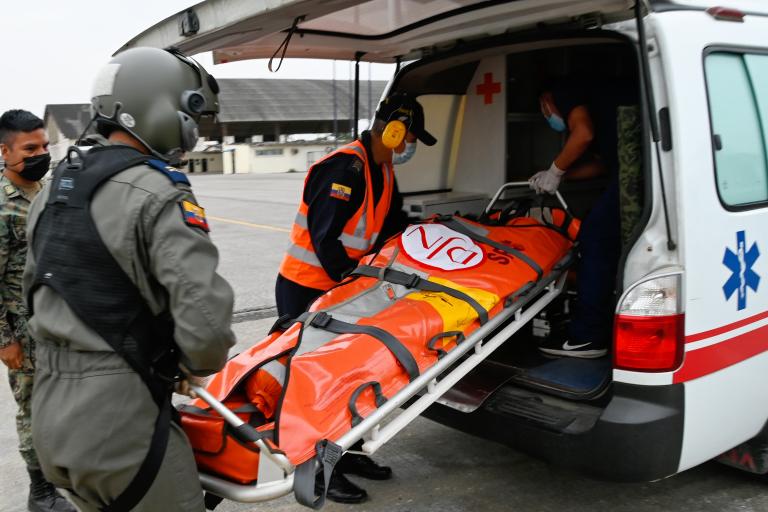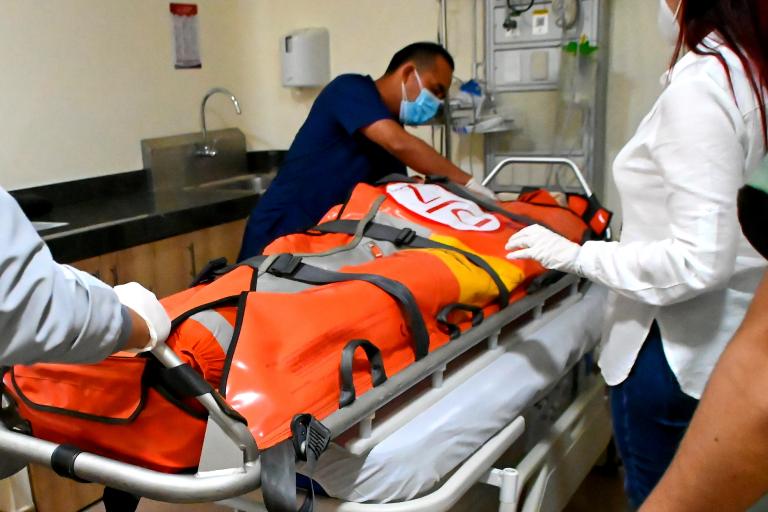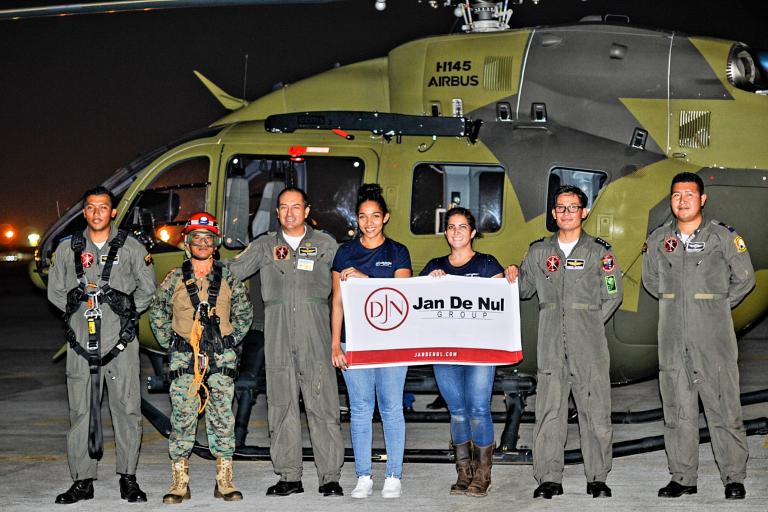
Medical evacuation exercise with the Air Force in Ecuador
The exercise on board the trailing suction hopper dredger Taccola simulated a crisis situation as realistically as possible: ‘a crew member is injured and has to be evacuated to hospital by helicopter’. “Different emergency situations can happen during on-board activities”, explains local QHSSE Advisor Karen Cortez. “Man over board, oil spill, fire, medical evacuations, security breach, etc. We don’t only want to prevent such emergencies, we also want to prepare ourselves for the possible occurrence and consequences of incidents. A constant practice and training of the procedures can make the difference between life and death.”
We don’t only want to prevent emergencies, we also want to prepare ourselves for the possible occurrence and consequences of incidents. A constant practice and training of the procedures can make the difference between life and death.
Karen Cortez
QHSSE Advisor
Help from Ecuadorian Air Force
Since 2019, Jan De Nul is deepening and maintaining both the maritime and fluvial channel in Guayaquil, in a concession of 25 years. The channels have a length of approximately 90 km each, with few boarding locations or quay walls. “We want to assure the best possible emergency response for any possible case”, says Karen. “If a vessel is too far away from an available quay wall, the only option for a medical evacuation would be an air rescue using a helicopter with a winch.”
The research for such a helicopter led to the Ecuadorian Air Force. “We discussed our needs and worries with them”, says Karen. “As a coincidence, the rescue helicopter team was just finishing a training on the use of the rescue winch. This exercise gave them the opportunity to put their theory into practice.” In total, eight members of the Air Force participated in this exercise: pilots, aero medics, winch operators and mechanics. After the evacuation, the Air Force transported the stretcher with an ambulance from their headquarters to a hospital in Guayaquil, where emergency doctors simulated the medical attention.
Both for the Air Force and the Taccola the operation was a success. A result of the good relationships that Jan De Nul maintains with the authorities and emergency response actors. The Air Force has already agreed for a future safety exercise, so we can keep improving our response to emergency situations.
Preparation on board
Prior to the exercise, the Air Force performed inspections aboard the Taccola. They checked the hospital room on board and all the medical provisions, they talked with the captain and first officers about their medical care trainings. In the end, they were impressed by the level of preparation for attending a medical emergency.
Private VHF radio frequency
The project team of Jan De Nul used this exercise to test their private VHF radio frequency. “In the past we have had some difficulties to maintain communication from the channel to the shore”, explains Karen. “With this improvement, we guarantee a constant communication.”
